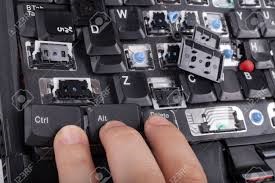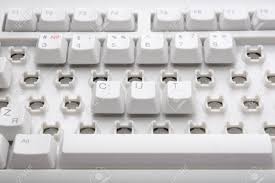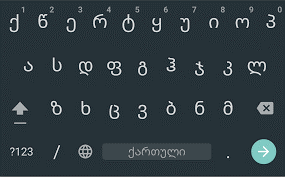
Children failing to acquire speech and language skills demonstrate weakness and/or impairment in developing their neuro-machinery that underpin their fundamental learning skills for classroom success. The earlier the intervention, the easier the correction program undertaken by Speech Pathologists for effort, time and most importantly, your family’s budget. Don’t lose precious brain development time by waiting on a list for speech therapy when your child’s brain doesn’t wait.
Instead, your child’s underlying impairments could be continuing to hard wire pathways in the brain incorrectly. Your child’s mind could be storing and rehearsing these speech and language mistakes which can have a disastrous impact on communication and future classroom academic failure- this later cost can actually be the true cost of the choice of no therapy.
Early speech therapy intervention for your child
is a no-brainer!! … it’s critical!!
Your child’s brain is understood to go through a hardening at 7 years of age but we understand as speech pathologists that the fine-tuning development of the minds structures to enable maturation of the listening, speech and language systems can be under development until as late as grade 4 for normal developing children.
Let’s look at what these structures do in relation to your child’s development.

- auditory processingmachinery-the brain functions that perceive and integrate information that is heard
- the phonologicalmachinery-the brain functions that develops the 46 speech sound grid like a computer keyboard that synthesises the speech sounds into words when we speak and also later when we learn to read and spell
- the language processingmachinery- the brain functions that store and link words for meaning and create sentences structures and attach this to what we are thinking about
- the cognitive processingfunctions-the minds ability to focus attention to concentrate, sequence and effectively integrate information in a smooth and organised manner. These skills also rely on the minds ability to create memories and to transfer information into storage, hold it there and then retrieve it for when the other parts of the mind need that information.

Our human capabilities even go beyond this with our development of language and then literacy skills for reading, spelling and writing in that we are life-long learners based on the teaching, stimulation and practice we provide for our brains to develop. Our chosen careers and activities can impact on how far that can actually go…and the stratosphere is the limit!

What we do know is that by building the minds individual skills and then enabling this to integrate successfully and efficiently with other operates in your child’s mind is similar to what we expect of a well-functioning computer. A computer relies on strong components, rapid processing speed, good integration and communication of its parts.
Your child’s mind does to!
Your child’s mind must also have great storage for memory and an ability to retrieve this information from memory. However, let’s get something clear. The end product is then based on what we store on our computer for information and then what we use it for…that is what comes out as an end product in your child’s talking. The better we are at inputting information, the better their little minds will be filled with loads of wonderful things to say.
Alternatively, we can have the best computer sitting on the shelf of a store in a box-but unless it is put to work-Magic doesn’t happen. The same occurs for your child. They may have all the potential in the world, but without investment into quality speech and language stimulation and learning, they may not reach their potential. This is especially so for children with known speech, language and learning challenges.

When considering the true value of corrective speech therapy intervention, and this therapy being undertaken in the early years, consider how useful your computer would be running with a:
 |
 |
 |
 |
- faulty keyboard (mixed of speech sound units-phonological impairment),
- words spitting out the wrong meanings (semantic impairment),
- the programs being unable to communicate with each other to create basic documents (building thoughts to sentences-language impairment)
- an inability to hold sentences in the memory (auditory processing/auditory memory impairments)
- the ability to synthesis and pull together information in a succinct and smooth way (integration impairments) and
- being unable to stay on the task you were working on with screens popping up everywhere (attention impairments).
Now consider a day at work or school trying to get your project completed.
It is just incredible to consider how hard and frustrating this would be.
I think this picture captures the feeling adequately!

This is a day in the life of a child with untreated attention, auditory processing, speech and/or language impairments.
It makes sense that these students with inattention, listening, speech and language impairments become frustrated, angry, act out and sometimes just give up on learning, they give up on school and some also can give up on the enjoyment in life.

I’m hard pressed to handle 15 minutes of my computer acting up like this when I have work to complete without walking away in frustration for a coffee or screaming for our technical troubleshooting Kerry to help!
I also have invested significantly in having the hardware and software on my office and work computers to be capable of the demand of speed, capacity and storage that my activities require. So, it would be even more important to invest in our minds – don’t you think?
The benefits of getting these neurological pathways, components and functions in order in the early years is so mandatory for children and their communication and education success. However, do remember, these children who miss out on effective and intensive treatment do grow up and the challenges continue into adult life making satisfying employment more unobtainable or just challenging.
This can place a greater loading on their employers to undertake their duties in comparison with other non-impaired individuals. It is probably fair to say that people who may have challenges of this nature may live with a pending fear of losing their job due to challenges with communication and literacy skills. Productivity and efficiency have become such a thing of the current workplace setting.
Most employers will consider this important point when they have to consider productivity and bottom line business sustainability and profit. So, a “therapeutic intervention” stitch in time… does saves 9″ or in some cases the entire keyboard and hard drive is a great place to start!

The true cost of TO PAY or NOT TO PAY is not the question in relation to investment into speech therapy for your child…it is …
WHAT WILL YOU PAY IF YOU DON’T ATTEND SPEECH THERAPY?
HOW MUCH MORE WILL YOU NEED TO PAY LATER IF YOU DON’T DO IT NOW?
and
FOR HOW LONG?
HOW MANY EDUCATIONAL AND EMPLOYMENT OPPORTUNITY
ARE YOU MISSING OUT ON LIFE LONG?
HOW HEAVY WILL BE THE BURDEN FOR YOU AND YOUR CHILD BE IF HELP IS NEEDING TO BE ONGOING FOR EDUCATION & EMPLOYMENT?
I get a lot of pleasure in my job when supporting a pre-school entry child through a complex speech and language correction program, when I get to say to the family when we have achieved our goals of therapy in early speech (phonological processing therapy) and development of their language … Sometimes I may even been able to say…
“Your child is well prepared now in their literacy skills for PREP and possibly GRADE 1 so you can sleep at night for a little while and not worry.”
This is often achieved because the Phonic All Star Speech and Literacy Correction Program works to develop your child’s literacy skills at the same time as the speech is being corrected.

Sometimes traditional phonological processing therapy, which is found to be clinically effective in correcting speech errors, can have the speech components corrected but the underlying deficits may lie dormant in the engineering neurological machinery that emerge later when your child begins to develop their literacy skills.
What I mean is…
Your child may have a /k/ sound said as a /t/ sound (velar fronting phonological pattern) and the speech therapy may have targeted the real words held in the minds filing drawer where the words koala, cat and couch live, but the therapy may not have changed the underlying program-or phonological keyboard-so when your child learns to read and spell, then out pops the same error speech sound error patterns in words that were not rehearsed and practiced such as new words (eg. Crumpet) and non-words like (eg. RUSKIN read as “rustin“).
So HOW Speech Pathologist go about speech sound correction for your child’s speech impairment is not mysterious nor magical.
It is not brain surgery but is brain therapy.

Therapy needs to include both correction of the hardware and addition to the data entry of the software – which we put in.
A successful speech therapy correction program is a process.
It is the assessment, diagnosis, and then the individually developed programs that are undertaken by our qualified – certified Speech Pathology practitioners that know how to adjust and implement what is required. No surgeon is going to jump into work without absolutely knowing what they are operating on. Speech Pathologists will need to do the same, otherwise your child’s time and your families money may be wasted if an accurate diagnosis from a period of assessment is not established.
Speech Pathologists make it look easy, rest assured on some days it is not an easy craft we undertake, especially when supporting the children with many moving part. Your child may have challenges sitting still, concentrating, fidgeting, interruptions, with emotional outbursts, and avoidance behaviour-tantrums. Wonder if working with young ones can be even g=harder than correcting a computer that sits put.
Some days it feels more like being a black belt in a dojo in a speech therapy clinical room to undertake the necessary treatment tasks. However, the training, the effort and the dedication from years in clinical practice is well worth the wonderful outcomes seen daily and to see the impact on the child skills, the family worry and their academic success over time.
In our Speech Therapy DIY we are looking forward to letting you in on as many secrets as we can to learn these tricks and skills to help your child at home the best that you can.
You now know how valuable this is to their development and future academic achievements, so there is nothing stepping in your way.
We are here to help.
Warm regards,

Katrine Elliott and The Optimal Communications Team
Speech Pathologist
Director of Optimal Communications Speech Pathology
Developer for Speech Therapy DIY

